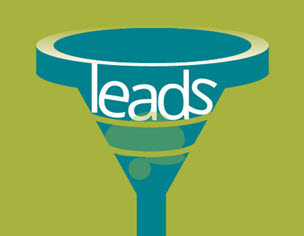Hard truths, easy solutions for enterprises
“Our demand generation program isn’t working, we need to move to account-based marketing now.”

Therein lies, as any enterprise B2B marketer who’s been paying attention will tell you, the predominant argument for why B2B companies should convert to an ABM strategy: traditional demand generation is broken. The lead funnel is obsolete. Inbound marketing doesn’t work, or at best is grossly inefficient.
We say: Not so fast. Maybe demand generation isn’t broken. Maybe some companies are just really bad at it.
Here are five of the most common issues we uncover when working with B2B companies to improve their nurture programs.
1. Relying too heavily on BDRs to respond to new leads
At some companies, as much as 80 percent of all new leads never make it to the next stage of qualification. The reason? Responsibility for responding to and qualifying those leads lies solely with a BDR team. If the BDRs can’t reach the prospects, the lead goes no further. The solution? Integrating automated email follow-up to all new leads as part of an Initial Lead Qualification program that runs concurrent with, and complementary to, BDR outreach.
2. No segmentation
A one-size-fits-all nurture strategy means that any email communication will be ignored by a significant percentage of your nurture database. In B2B email, relevancy is absolutely crucial. Even simple segmentation: making minor copy changes to emails to accommodate just two different personas, can have a dramatic impact on campaign performance and conversion metrics.
3. No mid-stage nurture
Enterprise companies need to abandon the notion that they can somehow know enough to deliver precisely the right information at the right time, at every step of the buyer journey. But to ignore the buyer journey altogether is to pretend that more qualified leads don’t have different information needs. A simple mid-stage nurture program, one that identifies those prospects showing signs of active interest and markets to them accordingly, can help surface sales-qualified leads far before a prospect might trigger or request a sales follow up.
4. Giving up too soon
Many companies run nurture campaigns of a finite length, the notion being I suppose that new leads should be nurtured for a fixed period of time until they convert to qualified status, and if that doesn’t happen, said leads should be abandoned, and more new leads should be generated at the top of the funnel. That is a colossal waste of marketing investment. If you’re paying $50-100 or more per MQL, i.e. for leads that meet your target criteria and have shown any interest whatsoever, that lead should be nurtured INDEFINITELY.
5. No offer variety
If your nurture program consists of primarily early stage offers (white papers on trends and best practices and the like), you’ll struggle to identify and engage with prospects who may be ready to take the next step and actively evaluate your product. Conversely, if your nurture emails are simply a constant drumbeat to download trial software or take a demo, you’ll miss the opportunity to educate, and build credibility with, those prospects who aren’t quite ready to look at a product. The ideal nurture program is a mix of early and late stage offers that appeal to a mix of prospects.
About Spear Marketing Group
Spear Marketing Group is a leading full-service demand generation agency that helps B2B companies of all sizes generate, nurture, and convert leads to revenue. Our unique, holistic approach to demand generation blends strategic expertise, creative flair, and a deep understanding of marketing technology to achieve measurable results across every stage of the lead lifecycle. Learn more at SpearMarketing.com.

